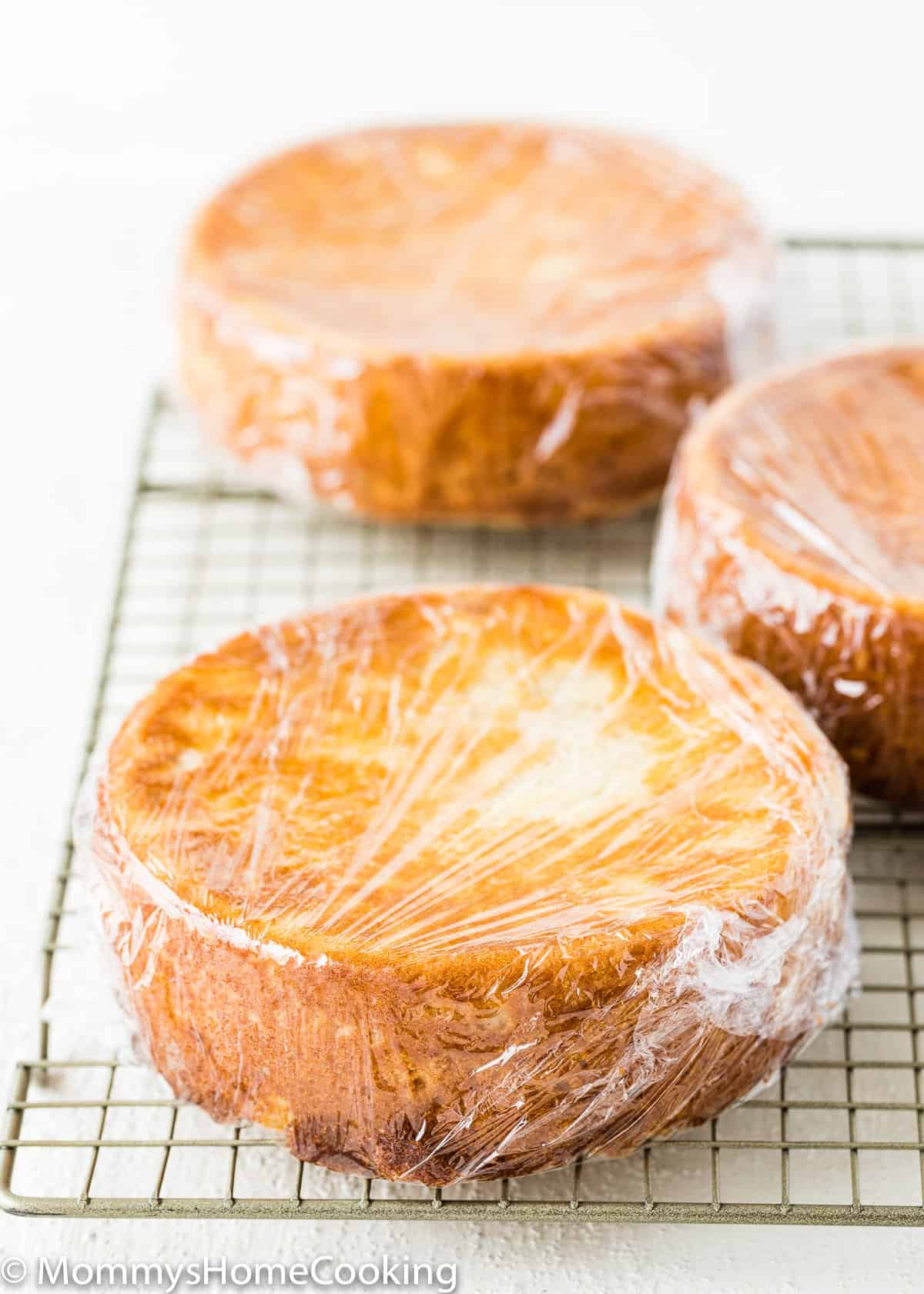Have you ever wondered why your cake sinks in the middle after baking? In this post, we’ll explore the factors at play and share tips to ensure your cakes rise to perfection.

Ugh, My Cake Sank!
It’s so frustrating when you pull a freshly baked cake from the oven, only to find that it sunk in the center once it cools. The sinking cake mystery is a common conundrum in the world of baking, and it can leave even the most experienced bakers scratching their heads.
I will share my tips and insights to ensure your cakes rise to perfection every time. So, let’s demystify the art of cake baking and discover the secrets to avoiding the dreaded sunken center.
1 – Underbaking
The most common cause of a cake sinking in the middle is underbaking. If the cake is not cooked completely in the center, it can collapse as it cools. It’s important to follow the recommended baking time and test the cake’s doneness using a toothpick or cake tester inserted into the center. If it comes out clean or with a few crumbs, the cake is likely fully baked.
Fix: Make sure your cake is baked ALL the way through. Check out my post about ways to test a cake to know if it is done baking! Additionally, resist the temptation to open your oven during the minimum recommended baking time specified in the recipe, as the cake’s structure is delicate. Opening the oven door can lead to a temperature drop of up to 20º, potentially causing the cake to collapse. Instead, observe the cake’s progress through the oven window until the final five minutes of baking.
2 – Oven Temperature
Incorrect oven temperature can lead to uneven baking and result in a cake sinking in the middle. Ensure that your oven is properly calibrated and preheated to the correct temperature, as stated in the recipe. Sudden fluctuations in temperature during baking can also cause the cake to sink.
Fix: Place an oven thermometer in your oven so you can read the inside temperature in real-time. Make sure your oven is properly preheated before placing items inside. A hot oven will help set and rise your baked goods more effectively. Preheat the oven for at least 15 minutes before you get started to give it plenty of time to reach the ideal recipe temperature.
3 – Overmixing
Overmixing the cake batter can lead to excessive air incorporation, creating an unstable structure. This can cause the cake to rise excessively and then collapse in the middle during cooling. Mix the batter just until the ingredients are incorporated to avoid overmixing.
Fix: Mix just until you’ve evenly distributed the ingredients throughout the batter. Use a plastic spatula to scrape the sides of the bowl, and don’t forget to scrape the bottom of the bowl for any pockets of flour or other ingredients.
4 – Leavening Agents
Too much or too little leavening agents, such as baking powder or baking soda, can affect the rise and stability of the cake. It’s important to use the correct measurements of leavening agents specified in the recipe to achieve the desired results.
Fix: I highly recommend using a kitchen scale to measure all your ingredients. A scale is not a big investment, but it will fundamentally change your baking results. Also, make sure your leavening agents are not expired or too old.
5 – Opening the Oven Door
Opening the oven door too early or frequently during baking can cause a sudden drop in temperature, affecting the cake’s structure.
Fix: Do not open the oven door! Observe the cake’s progress through the oven window until the final five minutes of baking or until the cake is almost fully baked to prevent drastic temperature changes.
6 – Pan Size
Using the wrong-sized pan can impact the cake’s structure. If the pan is too small, the cake batter may overflow and cause uneven baking. If the pan is too large, the cake may not have enough support to rise properly, leading to sinking in the middle.
Fix: Start by carefully reading the cake recipe you intend to use. Many recipes specify the required cake pan size. This information is usually found in the ingredient list or the baking instructions. If you don’t have the exact cake pan called in the recipe, my recommendation is to use one that is close in volume, which will require only a slight adjustment in baking time. Also, fill the cake pans to about two-thirds (2/3) full. This leaves enough space for the cake to rise while baking without overflowing or collapsing.
7 – Altitude or Humidity
High altitude or high humidity environments can affect baking outcomes. Adjustments to baking time, oven temperature, or ingredient ratios may be necessary for these conditions to prevent sinking or collapsing.
Fix: If you are baking under these conditions, you might need to run a few tests. Keeping a baking journal to note adjustments and outcomes can be helpful for future reference. This King Arthur Baking article might be helpful.
In conclusion, while a sinking cake can be a frustrating sight, understanding the factors at play and following best practices in baking can help you achieve cakes that rise beautifully. Whether you’re baking for a special occasion or simply indulging in a sweet treat, armed with this knowledge, your cakes are sure to be the talk of the table, with that perfect rise and taste that keeps everyone coming back for more.
Happy baking!
❤️ Love what you see? JOIN my Private Baking Club. Also, SUBSCRIBE to Mommy’s Home Cooking, so you’ll never miss a recipe! And FOLLOW along on Instagram, Pinterest, and Facebook for more fun!

Leave a Reply